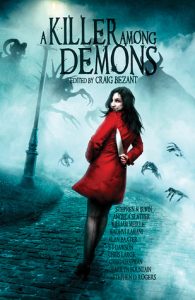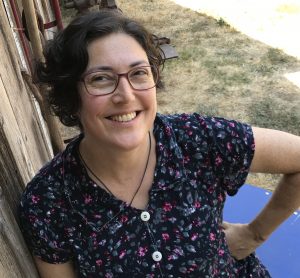 Jenny Jaeckel is the author of House of Rougeaux, her debut novel, which made Bitch Media’s 25 Must Read Books of 2018 list. Her previous titles include For the Love of Meat: Nine Illustrated Stories and Siberiak: My Cold War Adventure on the River Ob. In 2016, Jaeckel published the graphic memoir Spot 12: Five Months in the Neonatal ICU, which was the winner of the 2017 Next Generation Indie Book Awards and a 2016 finalist in the Foreword Indies Book Awards. She has worked as a translator, an editor, a Spanish teacher, a graphic arts teacher, and an illustrator. Jaeckel is currently working on her second novel, yet to be named, a continuation of the Rougeaux family epic.
Jenny Jaeckel is the author of House of Rougeaux, her debut novel, which made Bitch Media’s 25 Must Read Books of 2018 list. Her previous titles include For the Love of Meat: Nine Illustrated Stories and Siberiak: My Cold War Adventure on the River Ob. In 2016, Jaeckel published the graphic memoir Spot 12: Five Months in the Neonatal ICU, which was the winner of the 2017 Next Generation Indie Book Awards and a 2016 finalist in the Foreword Indies Book Awards. She has worked as a translator, an editor, a Spanish teacher, a graphic arts teacher, and an illustrator. Jaeckel is currently working on her second novel, yet to be named, a continuation of the Rougeaux family epic.
And she agreed to be on my little blogblogblog! If you haven’t read House of Rougeaux, I recommend you remedy that as soon as possible—must be ready for the sequel. Links to connect with Jenny and purchase her books follow the interview.
Tell me about your writing process, the mechanics of it, schedule, strategies to keep you going, where you write, research procedures, and what inspirations surround you or motivate you.
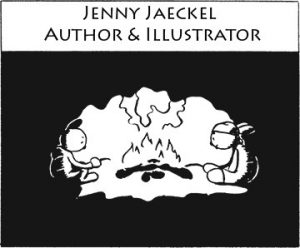 Wow, where to start… All the aspects of the process, whether internal or external are quite varied. As a writer, I have to have a whole mental “team” going on: the passionate one, the researcher, the emotional digger/investigator, the critic, the cheerleader, the scheduler, etc. etc. My biggest inspirations are my favorite books, the ones I love with all my heart and soul, and have made me want to be a writer in the first place. I always aspire to those literary heroes. They function like my North Star. I may be down in my clunky little rowboat, with my one broken oar, paddling furiously and getting nowhere, but when I look up, at least I know where I’m trying to go. J.D. Salinger, Toni Morrison, Merce Rodoreda, Eduardo Galeano, and Edith Wharton are some that I return to again and again.
Wow, where to start… All the aspects of the process, whether internal or external are quite varied. As a writer, I have to have a whole mental “team” going on: the passionate one, the researcher, the emotional digger/investigator, the critic, the cheerleader, the scheduler, etc. etc. My biggest inspirations are my favorite books, the ones I love with all my heart and soul, and have made me want to be a writer in the first place. I always aspire to those literary heroes. They function like my North Star. I may be down in my clunky little rowboat, with my one broken oar, paddling furiously and getting nowhere, but when I look up, at least I know where I’m trying to go. J.D. Salinger, Toni Morrison, Merce Rodoreda, Eduardo Galeano, and Edith Wharton are some that I return to again and again.
Tell me about the publishing process, including your publishing team, and your responsibilities as the author.
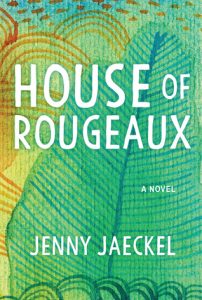 One of the most key parts of the process for me is working with my editor, Neesa Sonoquie. When I first showed her the manuscript for House of Rougeaux, I thought it was in pretty good shape. I’d already gotten some feedback from readers I trusted and done a lot of revising. But I had not worked with Neesa before. She absolutely demolished it. I’d sent off a book and got back confetti. It was humbling, but it turned out to be a transcendent moment. The revision process transformed the book and made me grow tremendously as a writer.
One of the most key parts of the process for me is working with my editor, Neesa Sonoquie. When I first showed her the manuscript for House of Rougeaux, I thought it was in pretty good shape. I’d already gotten some feedback from readers I trusted and done a lot of revising. But I had not worked with Neesa before. She absolutely demolished it. I’d sent off a book and got back confetti. It was humbling, but it turned out to be a transcendent moment. The revision process transformed the book and made me grow tremendously as a writer.
I am currently in such a moment again, because Neesa has just demolished a draft of my next book—a coming-of-age/love story that will be finished before the House of Rougeaux sequel (I’m still working on a first draft of the Rougeaux sequel.) What a good editor does is see the book you are trying to write inside the draft, which is full of wrong detours and other flaws. The demolition is all about cutting the crap so you can get to the true heart of the matter. It’s challenging but very exciting.
Describe your support system online and IRL—who are your biggest cheerleaders?
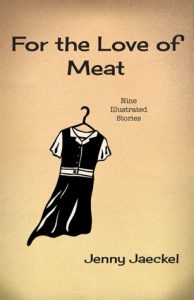 I don’t exactly have a cheerleading squad, but I have a small group of friends and acquaintances who have, at one time or another, said, or written some very wonderful things about how my work has touched them. When I get this in an email, for example, I print it out and put in on the wall by my bed, where I have a little collection, and when I get discouraged, I read them over and over. I also talk pretty regularly with three writer friends of mine. Though we all deal in different genres, the process and the struggle are the same, and being able to engage in that mutual support is essential. My lovely family is very supportive too. My partner and child give me regular feedback on my blog posts and written interviews (like right this second).
I don’t exactly have a cheerleading squad, but I have a small group of friends and acquaintances who have, at one time or another, said, or written some very wonderful things about how my work has touched them. When I get this in an email, for example, I print it out and put in on the wall by my bed, where I have a little collection, and when I get discouraged, I read them over and over. I also talk pretty regularly with three writer friends of mine. Though we all deal in different genres, the process and the struggle are the same, and being able to engage in that mutual support is essential. My lovely family is very supportive too. My partner and child give me regular feedback on my blog posts and written interviews (like right this second).
I know you’ve written about a difficult time in your life through a graphic memoir as part of coping and healing. In what other ways has your life influenced your art and vice versa? How do you choose your subject matter?
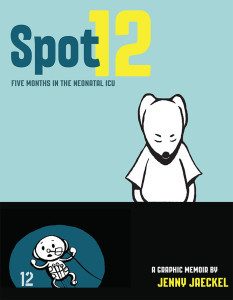 Art and life have a complete interface for me, like body and mind, or heads and tails sides of a coin. My first three books were all memoirs, the next two pure fiction, so while my relationships to all those topics varied, it was all deeply personal. When writing memoir, it has been much easier for me to see the therapeutic aspects of storytelling. Curiously though, putting key chunks of my life into these packages called books has made me identify with the stories less, as if these events happened to a human, and that human just happened to be me. It’s very liberating.
Art and life have a complete interface for me, like body and mind, or heads and tails sides of a coin. My first three books were all memoirs, the next two pure fiction, so while my relationships to all those topics varied, it was all deeply personal. When writing memoir, it has been much easier for me to see the therapeutic aspects of storytelling. Curiously though, putting key chunks of my life into these packages called books has made me identify with the stories less, as if these events happened to a human, and that human just happened to be me. It’s very liberating.
With fiction, though I’ve been exploring lives that couldn’t be more different from my own, every choice I make, and the ways I try to connect with my characters and get to know them, has everything to do with who I am. At the moment, working on this coming-of-age/love story, I am blending autobiography and fiction for the first time, and the process is extremely strange. I have to get to know the protagonist, for example, as the fictional person she is, but she is also so like a young version of myself that it’s a real mind-bender.
What do you love most about your creativity?
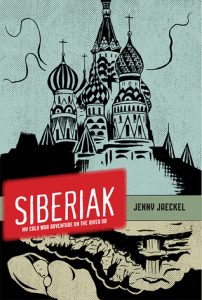 I am grateful to creativity for being the force that animates me. I think without it I’d be a lifeless hulk, a Frankenstein’s Monster pre-electrification, misshapen and covered in scars and moldy clothes (but smaller). I was lucky that as a child I was encouraged in art (so many are discouraged or even shamed for their efforts,) and lucky that since then I’ve had countless opportunities to grow creatively. Creativity takes infinite forms, I think it’s our birthright as human beings, and I think the more we can bring it to all aspects of our lives the better off we are. Once I heard the singer Krishna Das say in an interview that his music was how he stayed alive. He didn’t say music was his bliss and all that, he said it was how he literally stayed alive. I really appreciated that. It’s survival. Creativity is not the icing on the cake, it’s the cake itself.
I am grateful to creativity for being the force that animates me. I think without it I’d be a lifeless hulk, a Frankenstein’s Monster pre-electrification, misshapen and covered in scars and moldy clothes (but smaller). I was lucky that as a child I was encouraged in art (so many are discouraged or even shamed for their efforts,) and lucky that since then I’ve had countless opportunities to grow creatively. Creativity takes infinite forms, I think it’s our birthright as human beings, and I think the more we can bring it to all aspects of our lives the better off we are. Once I heard the singer Krishna Das say in an interview that his music was how he stayed alive. He didn’t say music was his bliss and all that, he said it was how he literally stayed alive. I really appreciated that. It’s survival. Creativity is not the icing on the cake, it’s the cake itself.
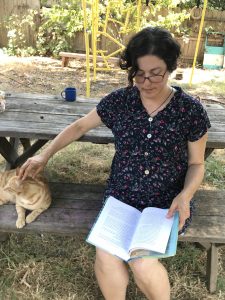 Connect with Jenny:
Connect with Jenny:
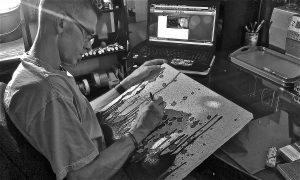 Brian Barnett is a Central Florida artist and designer who specializes in fine line abstract ink and pencil drawings, painting and other mediums. He is also the SO of my high school friend, and though I only know him online, he’s friendly and interesting, and his work is astonishing. I have to share it. After learning about him, follow the links at the end to contact Brian, scope out more of his work, and purchase pieces.
Brian Barnett is a Central Florida artist and designer who specializes in fine line abstract ink and pencil drawings, painting and other mediums. He is also the SO of my high school friend, and though I only know him online, he’s friendly and interesting, and his work is astonishing. I have to share it. After learning about him, follow the links at the end to contact Brian, scope out more of his work, and purchase pieces. Tell me about your artistic process, from ideation to finished product, including medium / material, schedule, environment, and inspirations tangible and abstract.
Tell me about your artistic process, from ideation to finished product, including medium / material, schedule, environment, and inspirations tangible and abstract. The process for my art can take a second or be meticulously planned for weeks months or even years. For example, if I’m working with pens, the process is almost instant. I don’t have a pre-planned route or image I am seeking when I create using the pens; it’s just free and letting the ink flow as it wants to create the images.
The process for my art can take a second or be meticulously planned for weeks months or even years. For example, if I’m working with pens, the process is almost instant. I don’t have a pre-planned route or image I am seeking when I create using the pens; it’s just free and letting the ink flow as it wants to create the images. 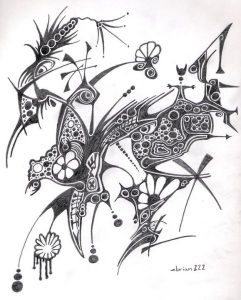 But if I’m working on a sculpture, I may have thought and planned it for months, looking through the bins of mixed media for that certain piece that make it perfect. I don’t have a preferred medium. I tend to draw mostly as it is most accessibleof my mediums at any time. I prefer lately to work with my hands, sculpting or building creations, with my next step being woodcarving and the eventual goal of teaching myself and being able to carve my wife’s face out of wood or sculpt from clay. I’m constantly challenging myself with new mediums.
But if I’m working on a sculpture, I may have thought and planned it for months, looking through the bins of mixed media for that certain piece that make it perfect. I don’t have a preferred medium. I tend to draw mostly as it is most accessibleof my mediums at any time. I prefer lately to work with my hands, sculpting or building creations, with my next step being woodcarving and the eventual goal of teaching myself and being able to carve my wife’s face out of wood or sculpt from clay. I’m constantly challenging myself with new mediums.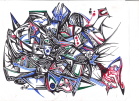 How do you find buyers—short-term and long-term strategies and venues; do you create art from your own vision and / or commission art?
How do you find buyers—short-term and long-term strategies and venues; do you create art from your own vision and / or commission art?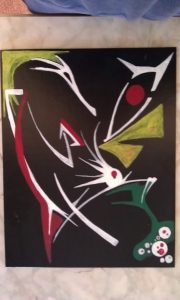 I do markets and online sales, hang in local galleries. and sometimes I post randoms for sale, but when I found this talent, I didn’t find it for fortune. I found it for sanity. I am always honored to sell a piece. To me, it means that person liked something that came from inside of me enough to spend money on it and hang it in their house. To me, that’s amazing. To me, it means I touched them; they connected with the image or the sculpture. That’s a priceless payday for an artist to see the viewer connect. I have done and am available for commissions—I love to work with a client to reach the perfect piece.
I do markets and online sales, hang in local galleries. and sometimes I post randoms for sale, but when I found this talent, I didn’t find it for fortune. I found it for sanity. I am always honored to sell a piece. To me, it means that person liked something that came from inside of me enough to spend money on it and hang it in their house. To me, that’s amazing. To me, it means I touched them; they connected with the image or the sculpture. That’s a priceless payday for an artist to see the viewer connect. I have done and am available for commissions—I love to work with a client to reach the perfect piece.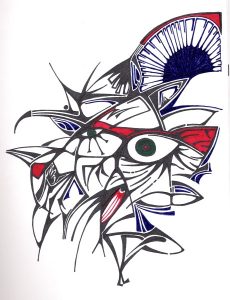 Describe your support system online and IRL—who are your biggest cheerleaders?
Describe your support system online and IRL—who are your biggest cheerleaders? So, when it comes to my support, my art is my release that allows the people who support me to connect to me in a way they wouldn’t have been able to before. If it weren’t for the Orlando art community’s support, and that of my family and friends, I couldn’t have as much joy on this mission of art as I do.
So, when it comes to my support, my art is my release that allows the people who support me to connect to me in a way they wouldn’t have been able to before. If it weren’t for the Orlando art community’s support, and that of my family and friends, I couldn’t have as much joy on this mission of art as I do.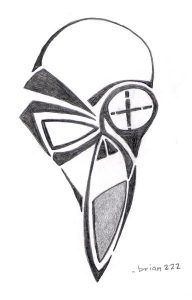 How does your life influence your art and vice versa?
How does your life influence your art and vice versa?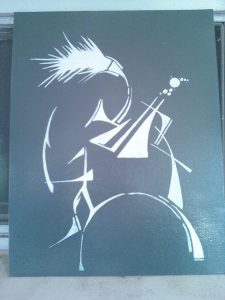
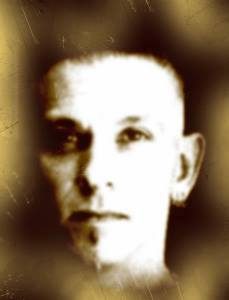 Connect with Brian:
Connect with Brian:
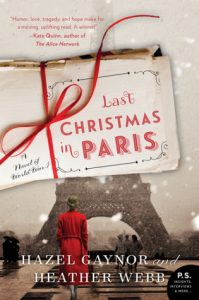 Describe your writing process, including schedule, environment, strategies / techniques, and inspirations abstract and material.
Describe your writing process, including schedule, environment, strategies / techniques, and inspirations abstract and material.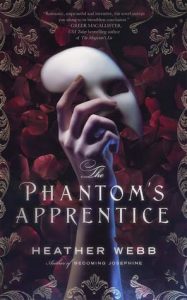 Walk me through your publishing process, from final draft to final product, explaining who on your team does what, and what marketing you do as the author. Elaborate upon going international, winning awards, and public speaking, please.
Walk me through your publishing process, from final draft to final product, explaining who on your team does what, and what marketing you do as the author. Elaborate upon going international, winning awards, and public speaking, please.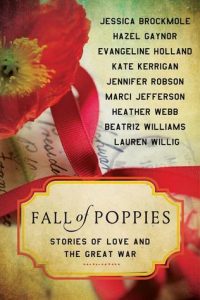 Tell me about your support system—online and IRL—and how that may shift during the progress from idea to launch. Who are your biggest cheerleaders?
Tell me about your support system—online and IRL—and how that may shift during the progress from idea to launch. Who are your biggest cheerleaders?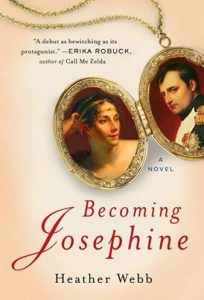 Did I read that you had a dream about Josephine, inspiring you to change your career from high school teacher to author? I find that astonishing! How does your life influence your art / work and vice versa? Where does research fit in, and do you have assistance?
Did I read that you had a dream about Josephine, inspiring you to change your career from high school teacher to author? I find that astonishing! How does your life influence your art / work and vice versa? Where does research fit in, and do you have assistance? What do you love most about your creativity? (You may shamelessly plug your editorial services here as well!)
What do you love most about your creativity? (You may shamelessly plug your editorial services here as well!)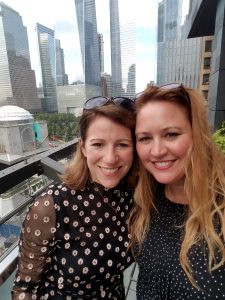
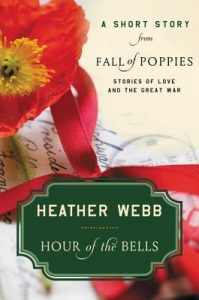 Connect with Heather:
Connect with Heather: I met Diane in person at a book signing in Topsail Beach at Quarter Moon Books. In my overzealous fangirling,
I met Diane in person at a book signing in Topsail Beach at Quarter Moon Books. In my overzealous fangirling,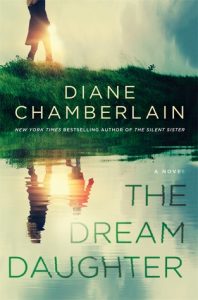 I crashed a book club photo and had to be gently shooed away. I’ve been her most awkward fan since, and she’s been the most gracious literary star. I show up for each new book’s signing / reading like a middle-aged stalker who looks so innocent (muahaha), and Diane keeps smiling and signing my new books. If only she could write super fast; I know I will love each new story. I was fortunate to receive an early copy of The Dream Daughter—
I crashed a book club photo and had to be gently shooed away. I’ve been her most awkward fan since, and she’s been the most gracious literary star. I show up for each new book’s signing / reading like a middle-aged stalker who looks so innocent (muahaha), and Diane keeps smiling and signing my new books. If only she could write super fast; I know I will love each new story. I was fortunate to receive an early copy of The Dream Daughter—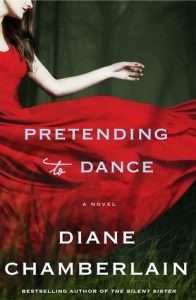 I usually write either in my Raleigh area sunroom or at my condo on Topsail Island. I generally have a year to write a book. The first few months, I think about my idea and start doing research, often visiting the area where the story takes place. I begin picturing scenes and putting them on post it notes that I move around on a big presentation board until I like the arc of the story, thus creating an outline. At the same time, I think about my characters, specifically what type of person will have the hardest time dealing with whatever dilemma I’ve come up with for the story.
I usually write either in my Raleigh area sunroom or at my condo on Topsail Island. I generally have a year to write a book. The first few months, I think about my idea and start doing research, often visiting the area where the story takes place. I begin picturing scenes and putting them on post it notes that I move around on a big presentation board until I like the arc of the story, thus creating an outline. At the same time, I think about my characters, specifically what type of person will have the hardest time dealing with whatever dilemma I’ve come up with for the story. 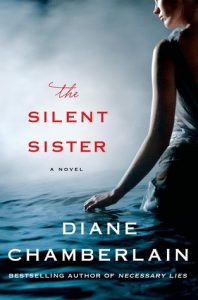 If there is no personal struggle, there is no story. I think about which characters will have a point of view in the story and will they have a first person or third person point of view and will I write the story in present or past tense. I sometimes look on the internet for pictures of people who make me think of my characters. I find this a huge help in creating characters who feel very real to me and hopefully to my readers. These are all decisions I make before I start writing.
If there is no personal struggle, there is no story. I think about which characters will have a point of view in the story and will they have a first person or third person point of view and will I write the story in present or past tense. I sometimes look on the internet for pictures of people who make me think of my characters. I find this a huge help in creating characters who feel very real to me and hopefully to my readers. These are all decisions I make before I start writing.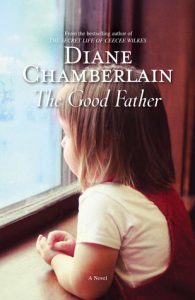 Finally, I start writing about 6 months before my deadline. I usually listen to movie soundtracks as I write because I like the emotional ups and downs of the music. I’m always doing research as I write. Also, I listen to my characters because they frequently go astray from my outline and I’ve learned to pay attention to them. I write three to five drafts. Finally, often a bit late, I turn in the book. That’s where my dynamite editor comes in. She reads the book, looking at the big picture. What works and what doesn’t? She makes many suggestions, sometimes requiring a big change in the book. I’ve learned to listen to her, and I rewrite. And perhaps rewrite yet again.
Finally, I start writing about 6 months before my deadline. I usually listen to movie soundtracks as I write because I like the emotional ups and downs of the music. I’m always doing research as I write. Also, I listen to my characters because they frequently go astray from my outline and I’ve learned to pay attention to them. I write three to five drafts. Finally, often a bit late, I turn in the book. That’s where my dynamite editor comes in. She reads the book, looking at the big picture. What works and what doesn’t? She makes many suggestions, sometimes requiring a big change in the book. I’ve learned to listen to her, and I rewrite. And perhaps rewrite yet again.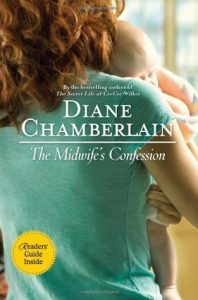 Here’s how it works. First I write a book. Then I have an agent who is responsible for finding the publisher she thinks will do the best job with that book. She is also responsible for negotiating the contract with that publisher. You can see in my answer above some of the work the editor does with regard to my book. The publisher then, of course, publishes the book. If the publisher feels strongly that they can make the book a bestseller, they will give it a lot of advertising and other support before and during publication. My publisher for the last six books, St. Martins Press, does a great deal of promotion for me. I try to hold up my end by keeping up with social media (which I enjoy), giving interviews, touring to speak to groups and do book signings, where I get to meet my readers, the best part of the process!
Here’s how it works. First I write a book. Then I have an agent who is responsible for finding the publisher she thinks will do the best job with that book. She is also responsible for negotiating the contract with that publisher. You can see in my answer above some of the work the editor does with regard to my book. The publisher then, of course, publishes the book. If the publisher feels strongly that they can make the book a bestseller, they will give it a lot of advertising and other support before and during publication. My publisher for the last six books, St. Martins Press, does a great deal of promotion for me. I try to hold up my end by keeping up with social media (which I enjoy), giving interviews, touring to speak to groups and do book signings, where I get to meet my readers, the best part of the process!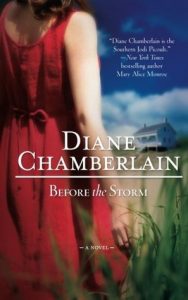
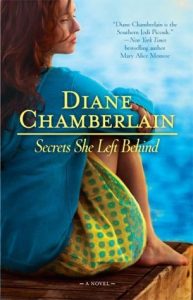
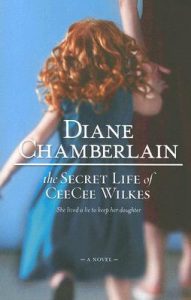 My biggest supporter is my significant other, John. He’s a photographer and understands the creative process and doesn’t complain that once a year, as deadline nears, I disappear from real life into my imagination, 24/7. Aside from him, I have many local writer friends who I get together with often. And then I have my “official group.” We call ourselves The Weymouth Seven because we originally met up at the Weymouth mansion in Southern Pines, NC, where authors are invited to work for up to two weeks each year. Now we usually meet up on Topsail Island. You’re right that Mary Kay Andrews is a big part of our group. She’s our ringleader, the one who keeps us on track during the week that we meet. Other members are mystery writer Margaret Maron, historical mystery writer, Sarah Shaber, horror and thriller writer Alexandra Sokoloff, and mystery writers, Brenda Witchger and Katy Munger. We have fun but we work hard at the same time.
My biggest supporter is my significant other, John. He’s a photographer and understands the creative process and doesn’t complain that once a year, as deadline nears, I disappear from real life into my imagination, 24/7. Aside from him, I have many local writer friends who I get together with often. And then I have my “official group.” We call ourselves The Weymouth Seven because we originally met up at the Weymouth mansion in Southern Pines, NC, where authors are invited to work for up to two weeks each year. Now we usually meet up on Topsail Island. You’re right that Mary Kay Andrews is a big part of our group. She’s our ringleader, the one who keeps us on track during the week that we meet. Other members are mystery writer Margaret Maron, historical mystery writer, Sarah Shaber, horror and thriller writer Alexandra Sokoloff, and mystery writers, Brenda Witchger and Katy Munger. We have fun but we work hard at the same time.


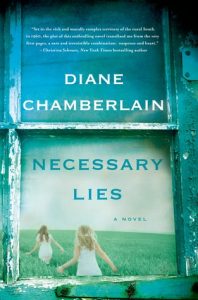 When I heard about the eugenics (forced sterilization) program in North Carolina, I knew I had to write about it. That meant setting the story during the years of the program, so I selected 1960 and thus wrote my first novel (Necessary Lies) with a totally historical setting and I found I really enjoyed it. Two books later, I decided I wanted to write about the 1944 polio outbreak in Hickory, NC during which the town built a functioning polio hospital in 54 hours (The Stolen Marriage). So I would say, if the idea that comes to me is historical, I will happily write it, but I am still perfectly happy writing contemporary books as well.
When I heard about the eugenics (forced sterilization) program in North Carolina, I knew I had to write about it. That meant setting the story during the years of the program, so I selected 1960 and thus wrote my first novel (Necessary Lies) with a totally historical setting and I found I really enjoyed it. Two books later, I decided I wanted to write about the 1944 polio outbreak in Hickory, NC during which the town built a functioning polio hospital in 54 hours (The Stolen Marriage). So I would say, if the idea that comes to me is historical, I will happily write it, but I am still perfectly happy writing contemporary books as well.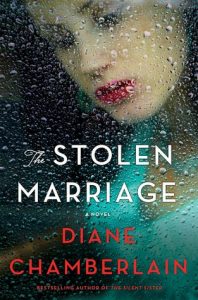 When it comes to The Dream Daughter, that is a whole different subject! For years, I had the idea that’s central in The Dream Daughter: a woman is told that her unborn baby will die, but she learns that if she’s willing to take a huge risk and travel to the future, her baby could very well live. I put this idea off for years because it is so unlike my other books, but finally, I talked to my editor and she gave me the go-ahead. The book was tremendous fun to write and the early reviews have been amazing. I’m grateful to readers who dislike time travel for giving this book a try because it’s still “vintage Diane Chamberlain” and people seem to be loving it.
When it comes to The Dream Daughter, that is a whole different subject! For years, I had the idea that’s central in The Dream Daughter: a woman is told that her unborn baby will die, but she learns that if she’s willing to take a huge risk and travel to the future, her baby could very well live. I put this idea off for years because it is so unlike my other books, but finally, I talked to my editor and she gave me the go-ahead. The book was tremendous fun to write and the early reviews have been amazing. I’m grateful to readers who dislike time travel for giving this book a try because it’s still “vintage Diane Chamberlain” and people seem to be loving it. I think your question about my previous profession (clinical social work) and secrets actually go together. I worked in hospitals and then in a private psychotherapy practice with adolescents and their families, and one thing I learned is how destructive secrets can be in a family. I was fascinated by that topic, so it often appears in my stories.
I think your question about my previous profession (clinical social work) and secrets actually go together. I worked in hospitals and then in a private psychotherapy practice with adolescents and their families, and one thing I learned is how destructive secrets can be in a family. I was fascinated by that topic, so it often appears in my stories.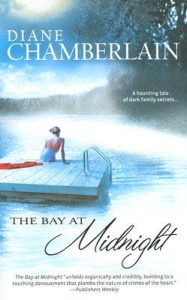 I’m very grateful for my imagination. It got me into tons of trouble as a kid, but now pays off. I might be stopped at a traffic light and see a woman pushing a baby carriage across the street and within 30 seconds, I imagine a car hitting them, and the police discover it was on purpose and there was a connection between the woman and the driver, or maybe even between the baby and the driver . . . it’s exhausting having a brain like this, but it often pays off in the end if it means I can entertain my readers.
I’m very grateful for my imagination. It got me into tons of trouble as a kid, but now pays off. I might be stopped at a traffic light and see a woman pushing a baby carriage across the street and within 30 seconds, I imagine a car hitting them, and the police discover it was on purpose and there was a connection between the woman and the driver, or maybe even between the baby and the driver . . . it’s exhausting having a brain like this, but it often pays off in the end if it means I can entertain my readers.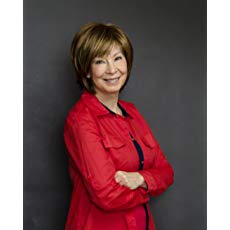 Website
Website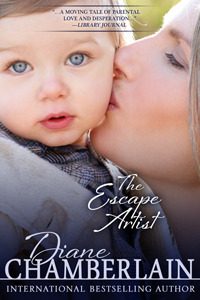
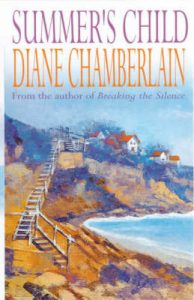
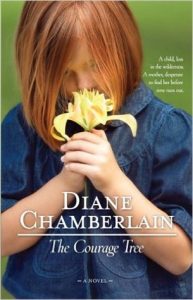
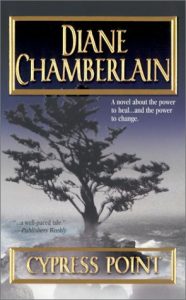
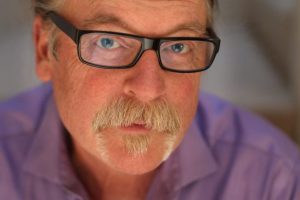 I met Bill on Facebook. He’s unique, pragmatic, wryly funny, and shares lots of mushroom pics amongst his politics. Oh yeah, he’s also a pretty talented writer. He’s always surprising me, in his books, online, and here in his interview. Read about his process and creativity; then read his books. You’re welcome.
I met Bill on Facebook. He’s unique, pragmatic, wryly funny, and shares lots of mushroom pics amongst his politics. Oh yeah, he’s also a pretty talented writer. He’s always surprising me, in his books, online, and here in his interview. Read about his process and creativity; then read his books. You’re welcome.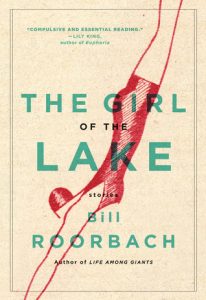
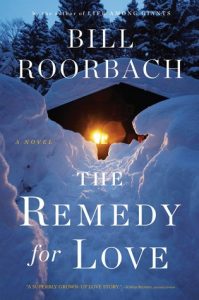 sometimes five or six a day, at any time, like waiting for my daughter at ballet class, just out in the car with the laptop tapping away. I do have a studio and when things get serious I sit out there with the skunks. I do a lot of daydreaming and side reading and more and more social media, unfortunately, or fortunately, I’m not sure which. Politics has clouded my brain, as well, but we can’t sit idly by. I had to look up pantser. I am not a pantser, but draft multiply and give myself all the time in the world.
sometimes five or six a day, at any time, like waiting for my daughter at ballet class, just out in the car with the laptop tapping away. I do have a studio and when things get serious I sit out there with the skunks. I do a lot of daydreaming and side reading and more and more social media, unfortunately, or fortunately, I’m not sure which. Politics has clouded my brain, as well, but we can’t sit idly by. I had to look up pantser. I am not a pantser, but draft multiply and give myself all the time in the world.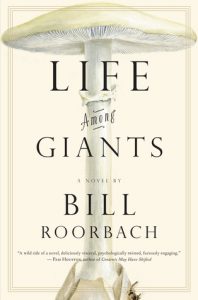
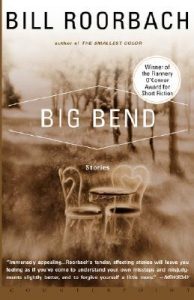 send the pages back in and return to the new project. Usually at that point the old project is accepted. Next come copyedits, possibly a legal reading, then first-pass galleys, second-pass galleys, all while a cover is being designed at the publisher’s, and jacket copy being written, a publicity campaign designed, book tour scheduled, all that stuff, which I have little to do with except approval or disapproval. The book comes out, the tour starts, I go on TV and radio, all the while finding those little blocks of time to work on the new project.
send the pages back in and return to the new project. Usually at that point the old project is accepted. Next come copyedits, possibly a legal reading, then first-pass galleys, second-pass galleys, all while a cover is being designed at the publisher’s, and jacket copy being written, a publicity campaign designed, book tour scheduled, all that stuff, which I have little to do with except approval or disapproval. The book comes out, the tour starts, I go on TV and radio, all the while finding those little blocks of time to work on the new project.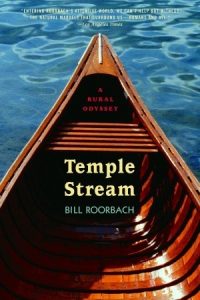
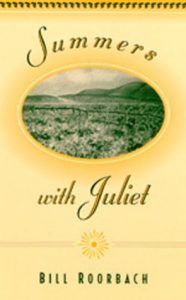 I too have an interesting background of employment (including llama care) giving me insight for specific storylines. How has your background prepared you for your writing career, and how does your life influence your art and vice versa?
I too have an interesting background of employment (including llama care) giving me insight for specific storylines. How has your background prepared you for your writing career, and how does your life influence your art and vice versa? What do you love most about your creativity?
What do you love most about your creativity?
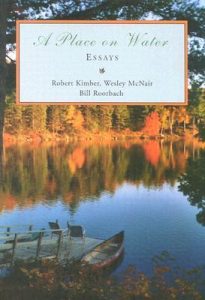
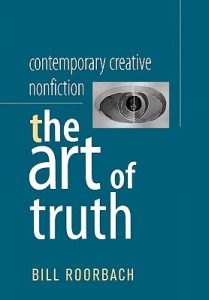
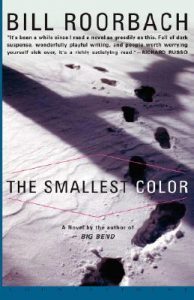
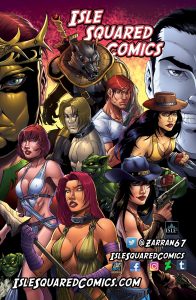
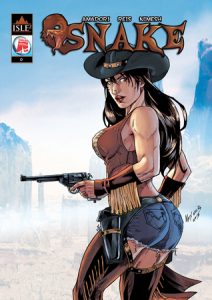
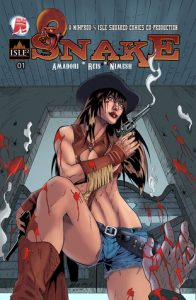
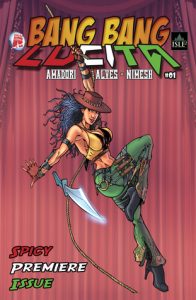 It’s been a real rewarding collaboration and we’re always on the same page creatively, which helps our separate ideas blend and mesh together seamlessly. My other major collaboration was the Western Trilogy (Snake, Bang Bang Lucita and Xibalba) with colorist Nimesh Morarji. Again, another great collaboration that if it we had the funds to continue, would have seen the release of 15 + issues between the three titles and a crossover title called Viperous Vixens (which have all already been scripted).
It’s been a real rewarding collaboration and we’re always on the same page creatively, which helps our separate ideas blend and mesh together seamlessly. My other major collaboration was the Western Trilogy (Snake, Bang Bang Lucita and Xibalba) with colorist Nimesh Morarji. Again, another great collaboration that if it we had the funds to continue, would have seen the release of 15 + issues between the three titles and a crossover title called Viperous Vixens (which have all already been scripted).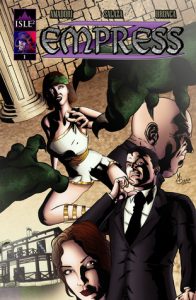
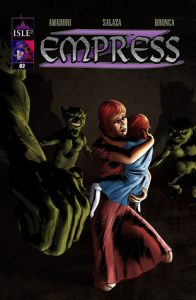
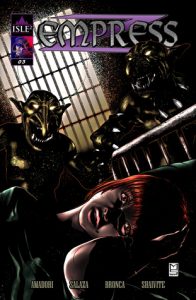

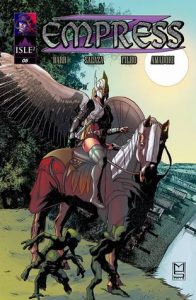
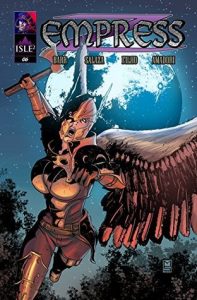


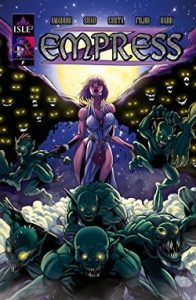

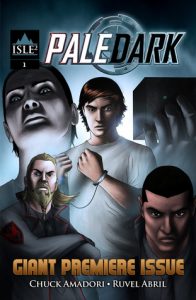
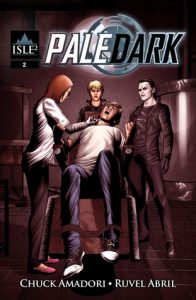
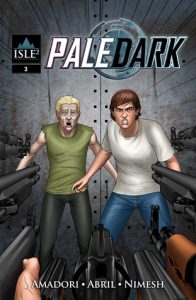
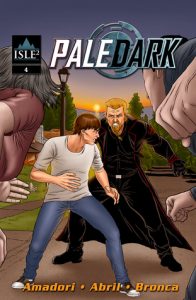
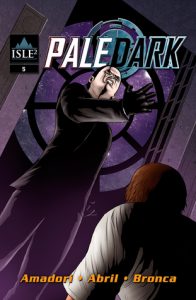
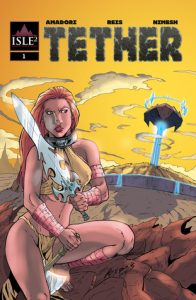

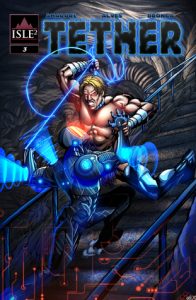
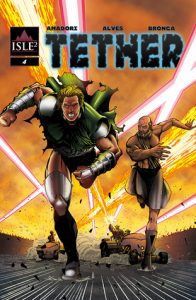
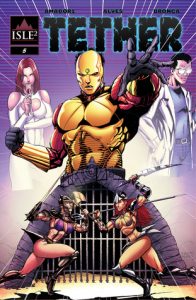
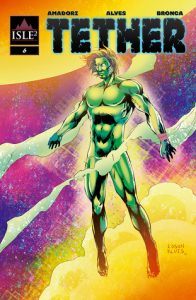
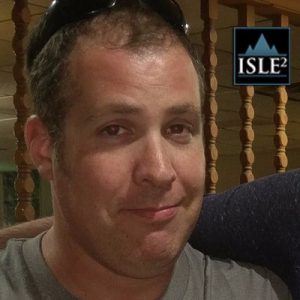
 I met Julie in Bloom, the readers group for Tall Poppy authors. She exudes positivity and encourages everyone to be their best selves, enlightening us with her expertise and wisdom. Listen to her TEDx talk:
I met Julie in Bloom, the readers group for Tall Poppy authors. She exudes positivity and encourages everyone to be their best selves, enlightening us with her expertise and wisdom. Listen to her TEDx talk: 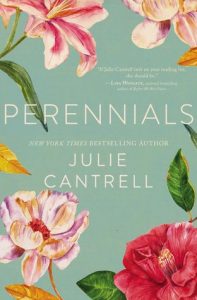
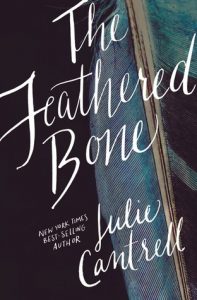
 Tell me about your support system and how you came to be a Tall Poppy.
Tell me about your support system and how you came to be a Tall Poppy. It’s wonderful how you use your author platform as a medium to serve others through education, disseminating information and raising awareness for social issues. Explain the intertwining of your life, advocacy, and writing.
It’s wonderful how you use your author platform as a medium to serve others through education, disseminating information and raising awareness for social issues. Explain the intertwining of your life, advocacy, and writing.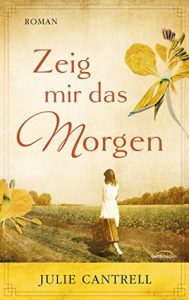 My work has tackled tricky issues such as domestic violence, sexual assault, mental illness, suicide, human trafficking, etc. I have been inspired by the many positive reader responses I have received through the years, the conversations my stories have sparked in book club meetings, and the impact these fictional tales have had on the lives of many.
My work has tackled tricky issues such as domestic violence, sexual assault, mental illness, suicide, human trafficking, etc. I have been inspired by the many positive reader responses I have received through the years, the conversations my stories have sparked in book club meetings, and the impact these fictional tales have had on the lives of many. 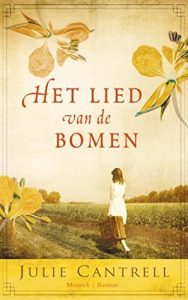 I am passionate about encouraging others to live the life they were born to live, to establish healthy relationships, and to know the difference between “love” and abuse. If my stories help people heal, find freedom, or love one another, then I am grateful to play a small part of that process.
I am passionate about encouraging others to live the life they were born to live, to establish healthy relationships, and to know the difference between “love” and abuse. If my stories help people heal, find freedom, or love one another, then I am grateful to play a small part of that process. 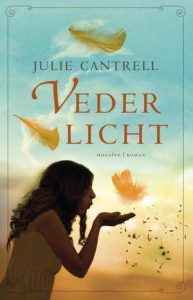

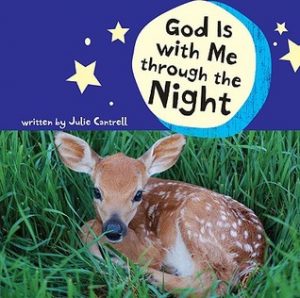
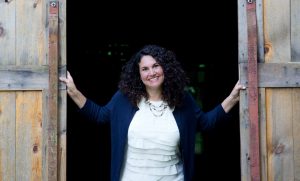
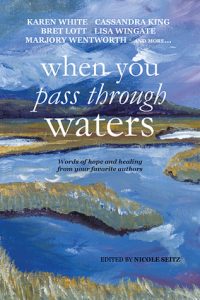
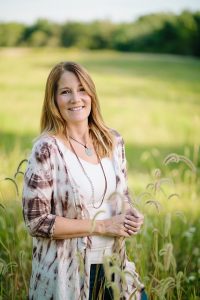
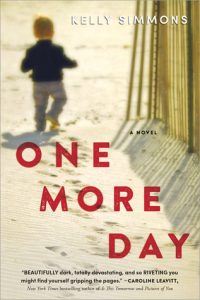
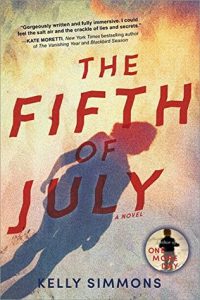
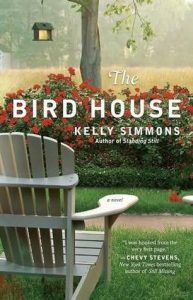
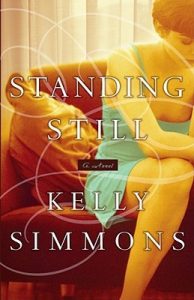 Doesn’t matter how big your publisher is, how many great reviews you got, or even if you wrote it in their library. If you’re not famous, many people just don’t care. They don’t want to put you on a panel, they don’t want to do an event, they don’t want your bookmarks, they’re like, meh. There are too many writers, traditionally published and self-published, and they are inundated, and they don’t care. That being said, some booksellers are wildly supportive. You have to focus on the positives, yet be prepared for the negatives. And not take any of it personally. The business, and the internet, have created a world where being an author is not that special anymore. Everybody’s an author.
Doesn’t matter how big your publisher is, how many great reviews you got, or even if you wrote it in their library. If you’re not famous, many people just don’t care. They don’t want to put you on a panel, they don’t want to do an event, they don’t want your bookmarks, they’re like, meh. There are too many writers, traditionally published and self-published, and they are inundated, and they don’t care. That being said, some booksellers are wildly supportive. You have to focus on the positives, yet be prepared for the negatives. And not take any of it personally. The business, and the internet, have created a world where being an author is not that special anymore. Everybody’s an author.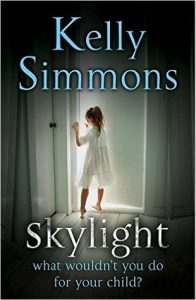
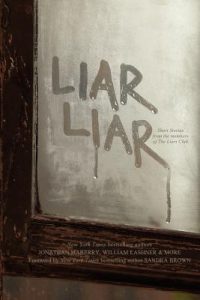 and interview all kinds of people related to the business, which is super fun. And The Tall Poppies are an author marketing collective, and that’s about marketing savvy and selling books in innovative ways. That’s about readers, and adding value. I also have a ton of writer friends from literary magazines, colleges, workshops, and writers’ conferences, who write in lots of different modalities–and I value those friendships dearly. When young writers say to me, what’s the first step? I always say, find community. Writing is lonely, and publishing is tough. You need drinking companions.
and interview all kinds of people related to the business, which is super fun. And The Tall Poppies are an author marketing collective, and that’s about marketing savvy and selling books in innovative ways. That’s about readers, and adding value. I also have a ton of writer friends from literary magazines, colleges, workshops, and writers’ conferences, who write in lots of different modalities–and I value those friendships dearly. When young writers say to me, what’s the first step? I always say, find community. Writing is lonely, and publishing is tough. You need drinking companions.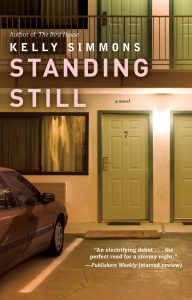 I think you are maybe on your third or fourth career; how have previous positions prepared you for the writing life. How does your writing influence your life?
I think you are maybe on your third or fourth career; how have previous positions prepared you for the writing life. How does your writing influence your life? 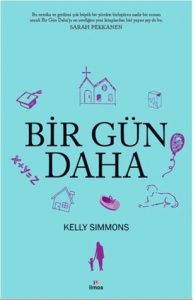
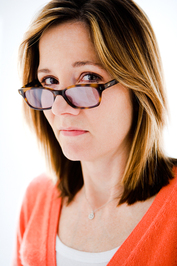
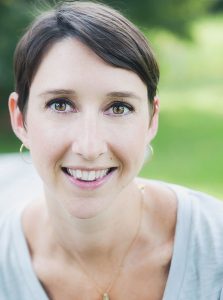
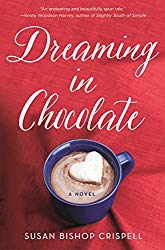 Next came line edits. In this round of editing, Kat made suggestions and changes at the sentence level to help with clarity and word choice and flow, and I updated the manuscript as needed based on those notes. From there, the book went to the copyeditor, who went through the book with a fine-tooth comb, marking inconsistencies (for example, a character said something on page 10 but something on page 200 seemed to contradict it), places where I used the same word within a short span, questioning confusing/unclear sentences, and generally cleaning up anything that was out of place. After copy edits, I received my first pass pages, the typeset/designed book printed out for hardcopy edits. (At this point, it’s the last chance to make any changes to a book.) The production team incorporated my changes into the designed text and sent it off to the proofreader, who sent me a handful of final questions/clarifications before it was out of my hands for good.
Next came line edits. In this round of editing, Kat made suggestions and changes at the sentence level to help with clarity and word choice and flow, and I updated the manuscript as needed based on those notes. From there, the book went to the copyeditor, who went through the book with a fine-tooth comb, marking inconsistencies (for example, a character said something on page 10 but something on page 200 seemed to contradict it), places where I used the same word within a short span, questioning confusing/unclear sentences, and generally cleaning up anything that was out of place. After copy edits, I received my first pass pages, the typeset/designed book printed out for hardcopy edits. (At this point, it’s the last chance to make any changes to a book.) The production team incorporated my changes into the designed text and sent it off to the proofreader, who sent me a handful of final questions/clarifications before it was out of my hands for good.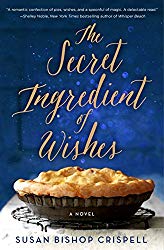 With all the edits complete, it was time to shift the focus to marketing. The design team created a cover I adore. The only input I had was to tell them up front I wanted a pie on the cover (since the book involves magical, secret-keeping pie!). I’m sure they did a few mock ups of different ideas before deciding on the final one, but I did not see anything until the final cover. I worked with the marketing team to write a few articles that they placed with blogs and websites as part of a blog tour around my release date, and they designed bookmarks and social media teasers for me to use as well. They also hosted two 100-book giveaways on Goodreads, which got my book out there to bloggers, reviewers, and readers and generated buzz ahead of launch. Outside of their efforts, I hosted giveaways and created my own graphics to promote the book online and set up a local book signing.
With all the edits complete, it was time to shift the focus to marketing. The design team created a cover I adore. The only input I had was to tell them up front I wanted a pie on the cover (since the book involves magical, secret-keeping pie!). I’m sure they did a few mock ups of different ideas before deciding on the final one, but I did not see anything until the final cover. I worked with the marketing team to write a few articles that they placed with blogs and websites as part of a blog tour around my release date, and they designed bookmarks and social media teasers for me to use as well. They also hosted two 100-book giveaways on Goodreads, which got my book out there to bloggers, reviewers, and readers and generated buzz ahead of launch. Outside of their efforts, I hosted giveaways and created my own graphics to promote the book online and set up a local book signing. Another group I am grateful for is the Pitch Wars community. For those who don’t know,
Another group I am grateful for is the Pitch Wars community. For those who don’t know, 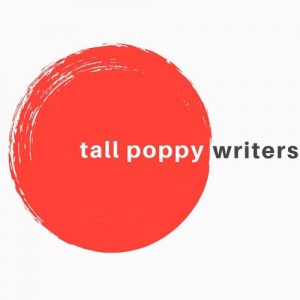 Karma is also how I became a
Karma is also how I became a 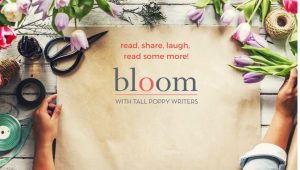 And our Facebook group,
And our Facebook group, 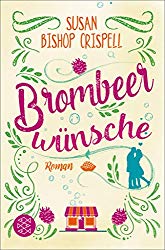
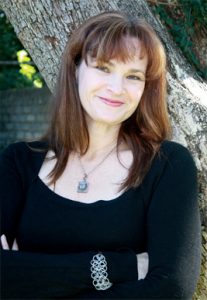 I became familiar with Angela through her short story collections, which I believe are brilliant. Then I
I became familiar with Angela through her short story collections, which I believe are brilliant. Then I 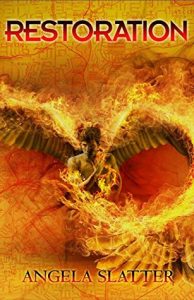 found her on Facebook and she is super nice. So, after fangirling like crazy, I asked her for an interview, and a new favorite author of mine is on my little blog. If you love speculative fiction, fairytales (think Grimm, not Disney), and suspenseful horror, read Angela Slatter’s work, which can be find on her website, Goodreads, and Amazon (links below). She launches now Restoration, the third book in her urban fantasy series starring Verity Fassbinder.
found her on Facebook and she is super nice. So, after fangirling like crazy, I asked her for an interview, and a new favorite author of mine is on my little blog. If you love speculative fiction, fairytales (think Grimm, not Disney), and suspenseful horror, read Angela Slatter’s work, which can be find on her website, Goodreads, and Amazon (links below). She launches now Restoration, the third book in her urban fantasy series starring Verity Fassbinder.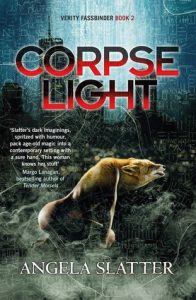
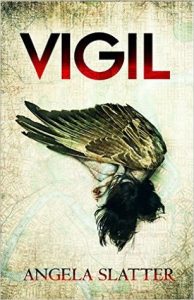
 I always need to have an image or a line or a character…sometimes I don’t know what the story is going to be, but I do have a really strong image or action in mind, so I’ll start writing from there. I don’t “push” at it, just let the words roll out and give me some idea of what might be happening with this character or in this place, or the consequences of this act. Sometimes I know exactly what will happen in the story, and I’ll just write the whole thing in a day or two
I always need to have an image or a line or a character…sometimes I don’t know what the story is going to be, but I do have a really strong image or action in mind, so I’ll start writing from there. I don’t “push” at it, just let the words roll out and give me some idea of what might be happening with this character or in this place, or the consequences of this act. Sometimes I know exactly what will happen in the story, and I’ll just write the whole thing in a day or two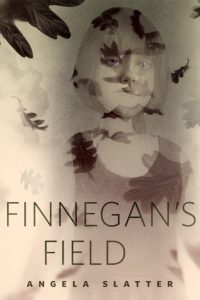 I have a bunch of notebooks I scribble ideas into, also post-its, and occasionally cocktail napkins with rambling notations slightly smudged by whiskey. I have a desktop in the office, but I also carry the laptop around the house; sometimes I write by the pool; sometimes I sit in front of the television, ignore the program, and just write (but those are times when I kind of want “white noise”). Sometimes I write to music, but that’s generally if a project’s been inspired by song lyrics or a tune.
I have a bunch of notebooks I scribble ideas into, also post-its, and occasionally cocktail napkins with rambling notations slightly smudged by whiskey. I have a desktop in the office, but I also carry the laptop around the house; sometimes I write by the pool; sometimes I sit in front of the television, ignore the program, and just write (but those are times when I kind of want “white noise”). Sometimes I write to music, but that’s generally if a project’s been inspired by song lyrics or a tune. When I’m writing a novel, there’s a lot more planning required—I have a spreadsheet that I use to get myself to the turning points in the story. They’re always just suggestions (like the Pirates’ Code), but they give me goalposts to write towards, and they can and generally do change depending on how the story progresses. Short stories—I always just have a rough idea of a three act structure, but I don’t worry too much about that in the first draft—I just brainvomit it out, and then the editing phase is where everything gets made “pretty” and logical.
When I’m writing a novel, there’s a lot more planning required—I have a spreadsheet that I use to get myself to the turning points in the story. They’re always just suggestions (like the Pirates’ Code), but they give me goalposts to write towards, and they can and generally do change depending on how the story progresses. Short stories—I always just have a rough idea of a three act structure, but I don’t worry too much about that in the first draft—I just brainvomit it out, and then the editing phase is where everything gets made “pretty” and logical.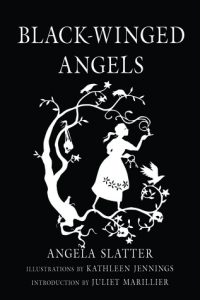
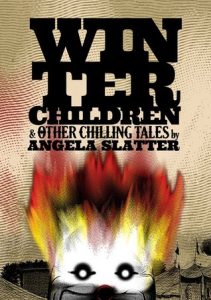
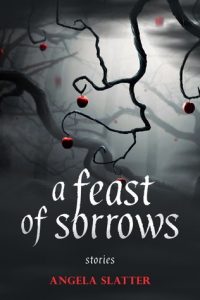
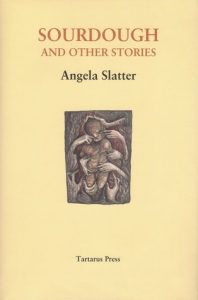

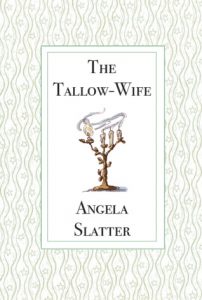

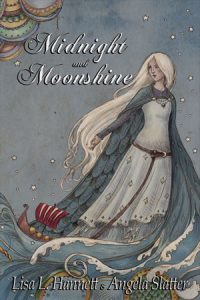
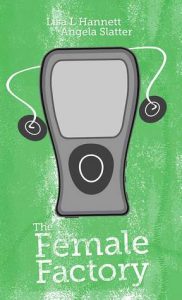
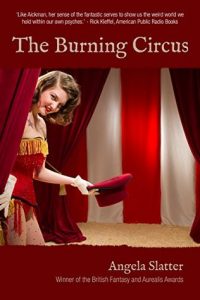 My family are always there for me, whether it’s to listen to me cry, or to listen to good news. My friend Lisa L. Hannett always has the pompoms out, and my beta readers Peter M. Ball and Alan Baxter are great sounding boards. And Kathleen Jennings, my frequent illustrator, is also a terrific person to talk to as she’s very calm. My housemates and their dogs look after me, and make sure I’m fed and watered regularly, and other friends make sure I leave the house at regular intervals, so I remember how to put on trousers the right way and talk to other human beings!
My family are always there for me, whether it’s to listen to me cry, or to listen to good news. My friend Lisa L. Hannett always has the pompoms out, and my beta readers Peter M. Ball and Alan Baxter are great sounding boards. And Kathleen Jennings, my frequent illustrator, is also a terrific person to talk to as she’s very calm. My housemates and their dogs look after me, and make sure I’m fed and watered regularly, and other friends make sure I leave the house at regular intervals, so I remember how to put on trousers the right way and talk to other human beings!
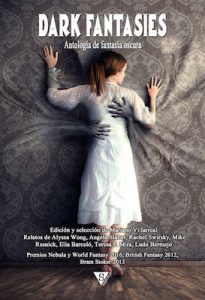 I was at the Bendigo Writers Festival this weekend just gone and that question about darkness came up a lot! My mother used to read me fairy tales, and they were the proper old Grimm ones, so they made a lasting impression. And my father was a police officer, and he used to leave his police journals around, which had reports of murder investigations and autopsy photos in them, and as I was a voracious reader from a young age, I saw a lot of interesting things! I have always been obsessed with true crime, and reading crime novels is what I do as a “break” from my usual genres. But I read it so much I think that it bleeds through into everything I write, subtly or otherwise.
I was at the Bendigo Writers Festival this weekend just gone and that question about darkness came up a lot! My mother used to read me fairy tales, and they were the proper old Grimm ones, so they made a lasting impression. And my father was a police officer, and he used to leave his police journals around, which had reports of murder investigations and autopsy photos in them, and as I was a voracious reader from a young age, I saw a lot of interesting things! I have always been obsessed with true crime, and reading crime novels is what I do as a “break” from my usual genres. But I read it so much I think that it bleeds through into everything I write, subtly or otherwise.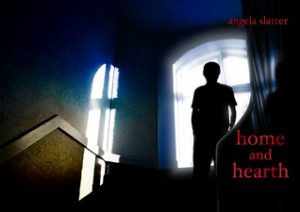
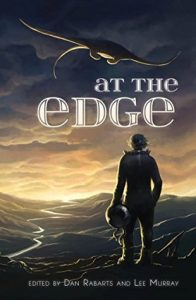 I love that I can escape from whatever is going on in the world that’s bothering me, for a while at least. It gives me a bit of respite where I can sort things out, take a breather, and work out some solutions rather than feeling panicked or pressured all the time. I love that I get to create worlds, that I am making stories other people are loving. I especially love that I get to be part of a long line of fairy talers, that I have had stories handed on to me—I will re-work them to my own tastes, and then I’ll pass them on to someone new, who will continue to pass them on and transform them. That makes me happy.
I love that I can escape from whatever is going on in the world that’s bothering me, for a while at least. It gives me a bit of respite where I can sort things out, take a breather, and work out some solutions rather than feeling panicked or pressured all the time. I love that I get to create worlds, that I am making stories other people are loving. I especially love that I get to be part of a long line of fairy talers, that I have had stories handed on to me—I will re-work them to my own tastes, and then I’ll pass them on to someone new, who will continue to pass them on and transform them. That makes me happy.